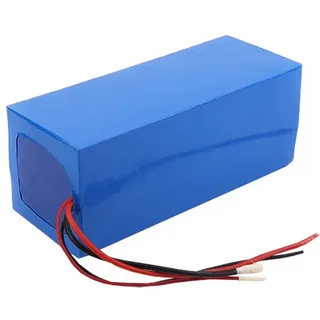When powering your off-grid adventures, marine electronics, or RV appliances, having a reliable deep-cycle battery is essential. This blog post will delve into deep-cycle batteries, focusing specifically on 100Ah deep-cycle batteries. We will discuss the uses, benefits, key specifications, factors to consider when choosing one, installation and maintenance tips, troubleshooting common issues, and real-life applications of these batteries. By the end of this post, you will have all the information you need to choose the best 100Ah deep cycle battery for your needs.
Understanding Deep-Cycle Batteries and Their Uses
Deep-cycle batteries, distinguished by their ability to provide sustained power over prolonged periods, are the backbone of many power systems where consistent energy flow is essential. Unlike their counterparts in starting vehicles, which discharge a large amount of power quickly, deep-cycle batteries excel in scenarios requiring long-term energy supply. This unique capability is due to their design, which allows for repeated deep discharges and recharges with minimal loss of capacity.
The versatility of deep-cycle batteries makes them indispensable across a variety of applications. In the realm of renewable energy, they are often paired with solar panel systems, storing energy during peak sunlight hours for use during the night or cloudy days. This stored power is crucial for off-grid living, providing a continuous energy supply in remote locations.
In recreational vehicles (RVs) and boats, these batteries power everything from lighting and refrigeration to navigation and communication equipment, enabling adventurers to maintain comfort and safety away from traditional power sources. Additionally, they are the driving force behind electric golf carts, allowing for numerous rounds on the course without the need for frequent recharging.
What sets deep-cycle batteries apart is their ability to withstand numerous discharge and recharge cycles without significant degradation. This resilience is beneficial not only for the applications mentioned but also for any scenario where the reliability and longevity of the power supply are paramount. Whether for leisure, exploration, or sustainability, deep-cycle batteries offer a dependable solution for various energy needs.
Key Specifications to Look for in a 100Ah Deep-Cycle Battery
When selecting a 100Ah deep-cycle battery, it’s crucial to scrutinize several essential specifications determining its suitability for your application. The battery’s capacity, represented in Ampere-hours (Ah), showcases the total energy the battery can store. For example, a battery rated at 100Ah can deliver five amps of current over 20 hours or ten amps over 10 hours, making it crucial to ensure this capacity aligns with your power requirements.
Another vital specification is the battery’s voltage, which needs to match the system you intend to power. Most deep-cycle batteries for consumer use are 12 volts, but you might require a different voltage depending on your setup. Pay attention to the battery’s cycle life, which indicates how many charge and discharge cycles the battery can endure before its capacity diminishes significantly. This figure provides insight into the battery’s longevity and overall value.
The type of construction — whether flooded lead-acid, AGM (Absorbent Glass Mat), or gel — impacts maintenance needs and performance in specific environments. AGM and gel batteries, for example, offer advantages in terms of maintenance and spill resistance, making them suitable for use in varied positions and conditions.
Lastly, consider the battery’s discharge rate, which affects how quickly it can safely discharge without damaging its long-term capacity. This is particularly relevant for applications requiring high bursts of power over short durations. Understanding these specifications will guide you in choosing a 100Ah deep-cycle battery that meets your energy needs efficiently and effectively.
Benefits of Using a 100 Ah Deep Cycle Battery
Opting for a 100 Ah deep cycle battery presents numerous advantages that cater to a wide array of power needs, setting it apart from other battery types in terms of efficiency and durability.
One of the key benefits is its remarkable capacity to endure repeated deep discharge cycles without compromising performance. This attribute ensures a steady and dependable source of power, which is crucial for applications where uninterrupted energy is essential. Moreover, the longevity of 100Ah deep-cycle batteries signifies a notable reduction in replacement costs and maintenance over time, presenting a cost-effective solution for long-term use.
These batteries are adept at delivering consistent power output, an essential feature for devices and systems requiring stable energy supply, such as solar energy storage, RV appliances, and marine electronics. The design and construction of 100Ah deep-cycle batteries accommodate the rigours of extensive use, making them a robust option for challenging environments and demanding applications. Additionally, their ability to maintain performance over various temperatures and conditions further enhances their versatility and appeal.
Furthermore, the environmental footprint of 100Ah deep-cycle batteries is minimized by their extended lifespan and higher efficiency, contributing to a more sustainable energy-use approach. Users can take solace in the fact that by choosing these batteries, they are opting for an energy solution that balances performance with environmental considerations. These multifaceted benefits underscore why a 100Ah deep-cycle battery is superior for those seeking reliable, long-lasting, and efficient power solutions.
Factors to Consider When Choosing a 100Ah Deep-Cycle Battery
Selecting the right 100Ah deep-cycle battery for your needs involves more than just picking the first one you find. Here are five crucial factors to keep in mind during your selection process:
Battery Type:
The market offers a variety of deep-cycle batteries, including flooded lead-acid, AGM (Absorbent Glass Mat), and gel options. Each type has benefits and drawbacks, such as maintenance requirements, cost, and performance under different conditions. Understanding the differences can help you choose one that aligns with your needs and environmental conditions.
Brand Reputation:
Opting for a battery from a well-regarded brand can significantly impact the reliability and quality of your deep-cycle battery. Brands with a solid track record in producing durable, efficient batteries are often safer, as they likely have stringent quality control and better customer support.
Cycle Life:
A battery’s cycle life estimates its longevity in terms of how many discharge and recharge cycles it can undergo before its performance starts to degrade. A longer cycle life means the battery will serve you longer, offering a better return on your investment over time.
Size and Weight:
Your specific application may dictate the battery’s physical size and weight constraints. The dimensions and weight become significant considerations, especially in scenarios where space is at a premium or where the battery needs to be moved frequently.
Price:
While the initial cost is an important factor, it’s also crucial to consider the battery’s cost over its entire lifespan. A less expensive battery that needs frequent replacements may not be as cost-effective as a pricier option with a longer life span and lower maintenance costs. Balancing upfront costs with long-term value is key to making a prudent decision.
Maintenance Tips for Your 100 Amp Hour Deep Cycle Battery
Implementing regular maintenance routines is essential to ensure the longevity and optimal performance of your 100 amp hour deep cycle battery. Here are five critical maintenance tips:
Regular Charging:
Keep your battery charged according to the manufacturer’s guidelines. Avoid letting it fall below 50% charge, as deep discharging can shorten its lifespan. Use a quality charger that matches the battery’s specifications to prevent under or overcharging.
Cleaning Terminals:
Corrosion on the battery terminals can impede electrical conductivity. To prevent future corrosion, periodically clean the terminals with a solution of baking soda and water and apply a layer of petroleum jelly.
Checking Fluid Levels:
For flooded lead-acid batteries, it’schecking the electrolyte levels regularly is crucial. Top up with distilled water as needed, ensuring you do not overfill. AGM and gel batteries do not require this step because they are sealed.
Temperature Considerations:
Store and operate your battery within the recommended range. Extreme temperatures can severely impact battery performance and lifespan. If possible, keep the battery in a climate-controlled environment.
Visual Inspections:
Regularly inspect the battery for signs of wear, damage, or leaks. Address any issues immediately to prevent them from worsening. Ensure the battery is securely mounted and connections are tight and free from excessive wear.
Troubleshooting Common Issues with 100Ah Deep-Cycle Batteries
Encountering issues with 100Ah deep-cycle batteries can be frustrating, especially when they disrupt your power supply. Some of the most common problems include experiencing a drop in voltage, the formation of sulfation, and overheating. Each of these issues can affect the performance and lifespan of your battery.
A voltage drop may indicate the battery cannot hold a charge. This could be due to overuse, undercharging, or being left in a discharged state for an extended period. To address this, ensure the battery is fully charged using an appropriate charger. If the problem persists, the battery may have damaged cells or require equalization to balance the cell voltages.
Sulfation occurs when the battery is consistently undercharged, accumulating lead sulphate crystals on the plates. This condition can severely limit the battery’s capacity and ability to recharge. A desulfation or equalization charge may be necessary to combat sulfation, which applies a higher voltage to break down the lead sulphate crystals.
Overheating can result from overcharging or excessive discharge rates. It’s important to monitor the battery’s temperature and ensure it’s not exposed to high charging currents for prolonged periods. If overheating is frequent, inspect the charging system for faults and adjust the charging rate as needed.
In tackling these common issues, always refer to the battery’s manual for specific guidance and consider seeking professional advice for complex problems. Regular inspection and maintenance can prevent many of these issues, ensuring your deep-cycle battery continues to provide reliable service.
Real-Life Applications and Success Stories
Innovative applications and compelling success stories highlight the versatility and dependability of 100Ah deep-cycle batteries across various sectors. Homesteaders in remote areas have successfully transitioned to sustainable living by integrating these batteries into their energy systems, ensuring a steady power supply even in the absence of conventional utilities.
On the waters, sailors and fishermen rely on the enduring power of deep-cycle batteries to keep their navigational and safety equipment operational, securing peace of mind during long voyages.
Recreational vehicle enthusiasts enjoy the freedom to explore off-the-beaten paths, thanks to the reliable energy storage that powers their essential comforts and conveniences on the road. Golf courses have seen a noticeable improvement in operational efficiency and cost savings by switching their fleets of carts to electric power, underpinned by robust deep-cycle batteries.
Lastly, integrating these batteries into residential and commercial solar installations has empowered users to harness and store solar energy, significantly reducing grid dependence and promoting environmental sustainability. These examples underscore 100Ah deep-cycle batteries’ transformative impact in various applications, marking them as a cornerstone of modern energy solutions.
Conclusion
In summary, selecting a 100Ah deep cycle battery that meets your requirements involves a nuanced understanding of various factors, including type, brand reputation, cycle life, size, weight, and cost. Proper installation and regular maintenance are pivotal to maximizing the battery’s performance and lifespan. Facing common issues with awareness and prompt action can safeguard against disruptions in power supply. The vast array of real-life applications, from sustainable living to recreational and commercial uses, showcases the versatility and reliability of these batteries.
FAQs
Can I use a 100Ah deep cycle battery for my solar power system?
Yes, 100Ah deep-cycle batteries are suitable for solar power storage, ensuring you have energy available when sunlight is not sufficient.
How long does a 100Ah deep-cycle battery last on a single charge?
The duration depends on the load it powers. For instance, a 10A device can run for about 10 hours on a fully charged 100Ah battery. However, actual runtime can vary based on battery age, condition, and the specific energy demands of the powered devices.
Is it necessary to fully discharge a 100Ah deep-cycle battery before recharging?
No, the battery’s lifespan should avoid full discharges. Deep-cycle batteries perform best when recharged after moderate use without letting them fully deplete.




